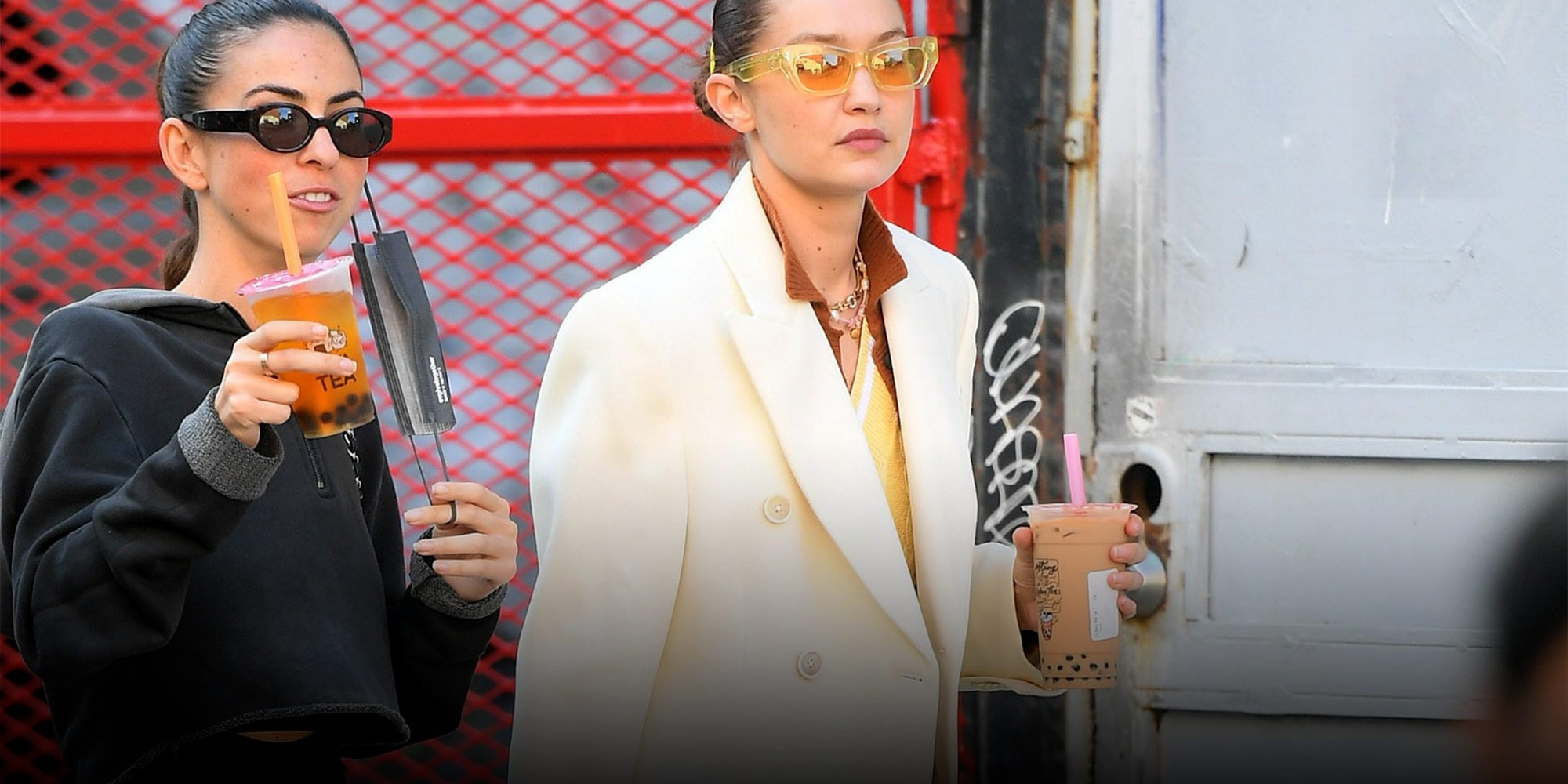
How Boba Became a Symbol of ‘Asian Cool’
This April, in the middle of yet another wave of COVID-19, a curious news item caught my eye: Thanks to snarls in the global supply chain and pandemic-related labor shortages, the western United States was facing a shortfall of the tapioca pearls known as boba, raising fears of a broader bubble tea shortage.
That Western mainstream media outlets were covering a possible shortfall of bubble tea, of all things, suggests how far the drink has come in the American popular consciousness since the late 1990s, when experts dismissed boba’s potential in the United States. “Unless you’re going to have some kind of mystical, ancient Chinese power from drinking it, [bubble tea] is not going to go anywhere,” the director of the Trends Research Institute Gerald Celente told the San Francisco Chronicle in 1999.
It may not confer ancient powers, but bubble tea is now one of the most recognizable symbols of Asian cool, not just in the United States, but across the West. Since the hip hop comedy duo The Fung Brothers declared bubble tea “The new drink of young Asians … Call us the boba generation” back in 2013, its status as an identity marker for a rising generation of Asian immigrants has only grown more entrenched. On Instagram, the “boba” hashtag has over 2.4 million posts, while bubble tea memes on Facebook groups like Subtle Asian Traits routinely earn hundreds of thousands of likes. You can buy boba in plush form and on limited edition shoes or send text messages with a boba emoji created by the Chinese American designer Yiying Lu. Even mainstream politicians like Hilary Clinton and Andrew Yang are wooing young Asian voters by posing for photographs, bubble tea in hand.
The story of how bubble tea ascended from an obscure product with no future in the United States to a powerful pop culture symbol of Asian coolness begins in the 1990s, when the drink followed a new wave of immigrants to North America. At the time, bubble tea was dismissed by many Americans as overly foreign, and it was sold only in Chinese restaurants. It wasn’t until after 1999, when the Taiwanese brand Saint’s Alp Teahouse opened a location in New York City’s Chinatown neighborhood, that Asian bubble tea brands entered the U.S. market.
Even then, bubble tea shops remained largely immigrant-owned and targeted. Whereas the first Chinese restaurants abroad often adapted their menus to cater to American tastes and consumers, boba stores sold unmodified, mostly powder-based drinks to a largely Asian clientele.

If these shops seem plain by today’s standards, they were nevertheless an irreplaceable part of many Chinese American millennials’ childhoods, in part because the drinks they sold were a parent-approved “healthy” alternative to alcohol. Over time, boba shops, with their cheap sofas and Asian pop playlists, became popular hang-out spots. Young Chinese Americans went there on dates, to do homework, or to meet up with friends.
This continued until the near-universal experience of drinking bubble tea became a recognized identity marker within the young Chinese American community. As the sociologist Anthony Giddens argues in his book on identity, authenticity can be a source of comfort and self-actualization, and for the generation of Chinese Americans who grew up in the 1990s and 2000s, bubble tea represents both an authentic part of their childhoods and a link to their parents’ homeland. The drink became intertwined with both their longing for an imagined home and, later, their nostalgic memories of childhood.
Yet, outside of the Asian community, bubble tea continued to be regarded with skepticism. It wasn’t until the 2010s, when that first generation of bubble tea drinkers grew up and began to wield increased consumer power, that a new generation of stores cropped up with more widespread appeal.
These new stores — many of them started by Chinese Americans nostalgic for the bubble tea shops of their youth but aimed at a broader clientele — replaced the bottled syrups and powders found in older stalls with fresh fruit, whole milk, and tea. They also updated the look of bubble tea shops, moving away from the homey but staid décor of early shops in favor of sleek, social media-friendly designs and bright lights.
To an extent, the rise of bubble tea mirrored that of Chinese immigrant populations. It evolved from an everyday, affordable product for recent Chinese immigrants into a cup of bourgeois gratification. New wave bubble tea shops are often located in gentrified urban centers or near universities with large, often middle-class Asian populations.
Still, for a time these new-style bubble tea shops’ primary customers remained either second- and third-generation Chinese Americans or Chinese students studying at North American schools. It was social media that helped it break into the mainstream, as fans of the drink posted photos of high-end bubble teas mixed in with other markers of middle-class identity and metropolitan consumption. This helped reinvent boba’s popular image, shedding its stigmas and turning it into a symbol of Asian cosmopolitanism.
Of course, not everyone in the broader Asian community is thrilled by how strongly bubble tea has come to be associated with Asian culture and identities in the West. Arong, a British-born Korean, told me he enjoys drinking bubble tea but rejects the idea that it represents his home culture, while Yao, a Chinese student in the U.K. with no particular attachment to bubble tea, feels frustrated whenever her British roommate defaults to asking her if she wants to get bubble tea.

In a sense, the emergence of bubble tea as a cultural symbol of “Asian coolness” also mirrors the rise of mixed political identities like “Asian American” in the 1960s. When the term first appeared in 1968, it was used by Asian activists to unite a diverse community and provide an alternative for the more derogatory “Oriental,” but soon “Asian American” took on its own stereotypical meanings, erasing and obscuring the real people and diverse identities included under its umbrella.
The rise of bubble tea is a classic story of intercultural exchange and transmission. But it’s really just an entry point for a far more interesting phenomenon: the global movement and dynamism of multiple generations of immigrants. There may come a time when Asians living in the West tire of boba’s increasingly loaded cultural connotations, but for now, it’s worth raising a toast to the drink that went further than anyone ever imagined.
Translator: Katherine Tse; editors: Cai Yiwen and Kilian O’Donnell; portrait artist: Wang Zhenhao.
(Header image: Gigi Hadid grabs boba tea with a friend while out in New York, U.S., Oct. 11, 2021. MEGA/IC)











